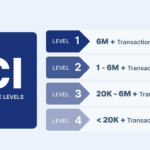Pet owners go to great lengths for their cherished dogs and cats, from purchasing their preferred food and toys to treating them to outings at the park or regular grooming sessions. Nowadays, an expanding number of owners are also considering the inclusion of pet insurance. Note that it is one of the ways to enhance and safeguard their pets’ well-being.
Securing pet insurance assures owners of coverage for a range of ailments, medications, and veterinary visits. This specialized insurance safeguards both your pet’s health and your financial stability. It’s crucial to acknowledge that pets differ, and the available types of pet insurance also vary. Specifically, dog owners should familiarize themselves with the specifics of this insurance. This article covers pet insurance tips dog owners need to know. These include guidelines and recommendations, to optimize the value of their investment.
Pet insurance tips dog owners should know
Though pet insurance may be perceived as a novel and distinctive concept, the approach to finding the optimal coverage for your dog follows the traditional path taken with any financial product: by actively seeking out the best rates and terms. Given that dog insurance tends to be more costly than cats, this becomes a pivotal stage in the pet insurance journey. It’s advisable to obtain quotes from a minimum of three different providers to establish a baseline for comparison.
During this process, ensure consistency by providing identical details to each provider. Maintain uniformity in aspects such as the dog’s breed, age, weight, and medical history when researching different insurance providers. This approach will enable you to make a more precise evaluation of which provider offers the most comprehensive and cost-effective policy. It will also help you distinguish genuine offerings from those that might appear favorable on the surface.
Diverse Breeds Entail Varied Expenses
It’s common knowledge among dog owners that various breeds exhibit distinct health issues and lifespans. Consequently, the expense of insuring different breeds differs considerably. In essence, breeds with well-known and prolonged health issues tend to incur higher costs compared to those without such concerns. Owners of Goldendoodles, Miniature Yorkshire Terriers, or English Springer Spaniels typically incur lower insurance costs compared to those with Newfoundlands, Dogue De Bordeaux, or Jack Russell Terriers.
Avoid Delaying Until Your Dog Falls Ill
Although it may appear counterintuitive, one of the optimal periods to obtain insurance for your dog is when they are still youthful and in good health. During this stage, owners can acquire the most extensive coverage at an affordable price. Delaying the decision until a pet falls ill may result in higher policy costs. Additionally, there’s a potential risk of rejection for coverage against pre-existing medical conditions. Applying for insurance before these conditions arise positions owners more favorably to access comprehensive care.
Adding to the significance of early insurance, owners should also factor in waiting periods. These periods, occurring between the approval of an application and the policy becoming active (typically a week or more, depending on the provider), are crucial to consider. Waiting until a dog falls ill may result in not having an accessible policy when needed. Hence, starting your research today is essential to ensure timely coverage.
Final Words: Pet insurance tips dog owners need to know
Securing pet insurance stands out as a highly valuable safeguard for both owners and their beloved pets. For dog owners aiming to optimize their protections while minimizing costs, it’s advisable to explore various lenders and policies. Additionally, comprehending the distinctions between cost and coverage specific to different dog breeds is crucial. Lastly, avoiding procrastination in the application process until a dog falls ill is essential. Note that doing so could lead to a lack of coverage when needed the most or even a complete rejection of the application.







